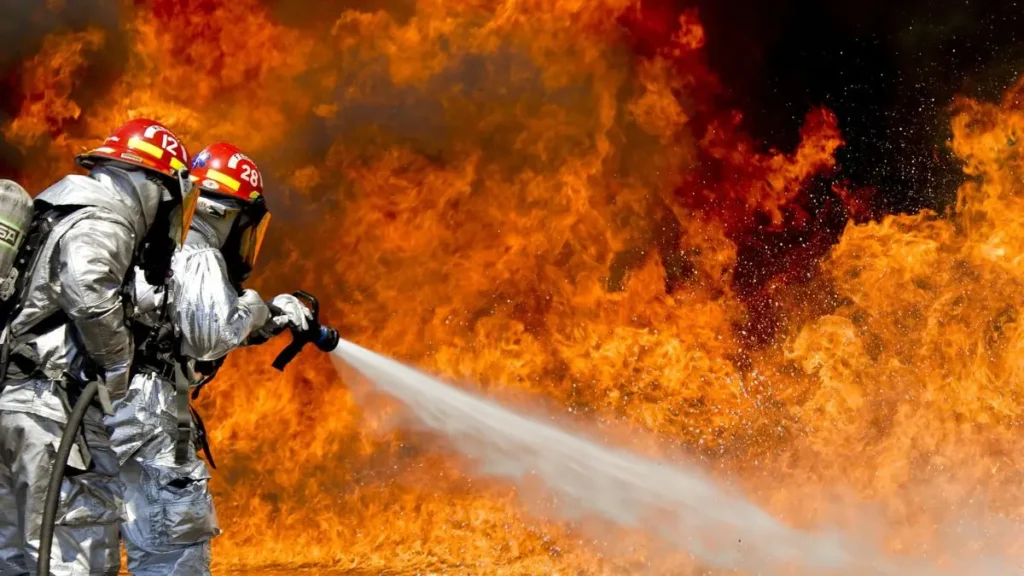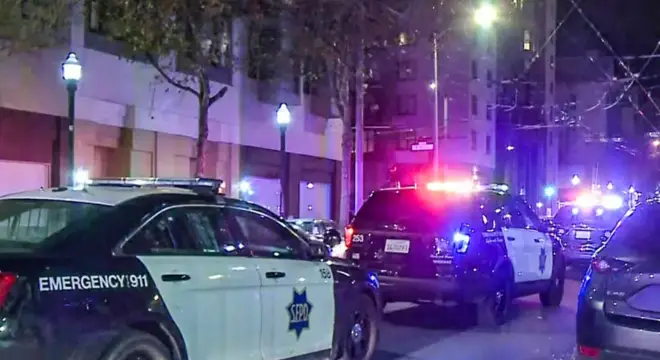Fatal House Fire in Washington State Leaves Boy and Three Pets Dead
When I first read through the official fire department reports and the early news coverage, the part that hit me hardest wasn’t just the loss itself — it was how quickly everything unfolded.
A quiet basement, a small flame in the corner of a bedroom, and within minutes an entire family’s life changed forever. If you’ve ever wondered how something like this could happen so fast, or how a family can be caught off guard even while asleep at home, this story forces you to look closer.
What’s your first reaction when you hear about a tragedy like this — shock, sadness, or questions about how something this preventable got so out of control?
Tragedy in Spokane: What Happened Overnight
The first thing I looked at was the official Spokane Fire Department update posted on Facebook, because it tells the story in the firefighters’ own words. They describe how the 911 call came in at 12:14 a.m., and Engine 16 — which happened to be clearing a nearby medical call — reached the home in about five minutes. When they pulled up, flames were already coming out of a basement window.
If you imagine that moment, it’s terrifying. A single-story home, a basement filling with heat, and firefighters being told that someone is still trapped downstairs. They went in through the front door first and found the boy’s grandmother — confused, struggling to breathe, and still trying to understand what just happened.
The crews tried going down the interior stairs, but the heat and smoke were so intense that they had to back out. In the Facebook report, they explained how they cooled the fire from the outside before pushing inside again. Only then could they reach the basement bedroom where the fire began.
This isn’t the kind of scene anyone forgets. And you can feel that in the department’s own words — the urgency, the chaos, and the helplessness of knowing a child was still down there.
How the Fire Started: What Investigators Found
When I went through the KREM 2 reporting, one detail stood out immediately: investigators confirmed that the fire was “incendiary in nature.” In simple terms, it means it didn’t start by accident. According to KREM 2, the boy ignited combustible materials in the basement bedroom.
This adds a layer of complexity and pain. You’re not just looking at a tragic fire — you’re looking at a situation where a child, knowingly or unknowingly, set something in motion that spiraled out of control within minutes.
KREM also confirmed that the fire began in a corner of the basement bedroom. The boy and his grandmother were both asleep there. When she woke up, she saw a small fire and tried to smother it with clothing. But by the time she tried to find the boy, the room had already filled with smoke so thick that she couldn’t see him.
For me, that’s the part that’s impossible to shake off — the idea of a grandmother trying to fight a fire with her bare hands and losing visibility within seconds.
Inside the Basement: What Unfolded in Those Final Minutes
The basement layout played a huge role in how fast things went wrong. When the grandmother woke up, the fire was still small, in a single corner. Most people don’t realize how quickly a small flame becomes a room-filling threat, especially in an enclosed space like a basement where heat and smoke have nowhere else to go.
She tried to smother the flames with clothing — a very human reaction when you don’t have water or an extinguisher nearby. But once the smoke thickened, she couldn’t see her grandson anymore. The Facebook report mentions that she “became disoriented,” and honestly, it makes sense. Imagine waking up half-asleep, seeing fire, choking on smoke, and trying to rescue someone you can’t even see.
She eventually made it upstairs, still trying to breathe, still trying to process what was happening. And by then, the fire was already too advanced for anyone inside the home to get back down safely.
Firefighter Response: The Race Against Heat, Smoke, and Time
One thing I appreciate about the fire department’s official breakdown is how transparent they were about the challenges. When the first crew entered, they found the grandmother inside the home, confused and struggling. They got her out, but the real fight was in the basement.
The interior stairwell was basically a wall of heat. Firefighters train for this, but basements are especially dangerous — the fire traps heat, visibility drops to zero, and the smoke becomes a physical barrier.
So, they made a tactical choice: cool the fire from outside first. Once the room’s temperature dropped enough, crews pushed down the stairs and into the basement bedroom. That’s where they found the boy. They removed him through a window, but he was pronounced dead at the scene.
Later searches uncovered two dogs and a cat, all lost to the smoke and heat. As heartbreaking as the boy’s death is, the loss of the pets adds another layer of grief for the family. Pets aren’t “extras” in a home — they’re part of the emotional core of a family.
It reminded me of a similar case in South Carolina, where firefighters faced the same race against time during a mobile home blaze — you can read that incident here: Lexington County Mobile Home Blaze Displaces Two Residents.
The Family Inside the Home: Survivors and the Human Impact
Six people were inside the home that night. The grandmother and the boy were in the basement. The boy’s mother and three other children were asleep upstairs.
The upstairs family members woke up to smoke and commotion and managed to evacuate on their own. It’s hard to imagine the panic of trying to understand what’s happening while you’re half awake and the house is already filling with smoke.
The grandmother was treated on scene for smoke inhalation, but she refused hospital transport — something you often see when someone is still in shock. The mother was taken for evaluation and released later.
According to reports, the boy was a student in Spokane Public Schools. The district hasn’t released which school he attended, but they’ve deployed counselors for students and staff who might be affected by the news. That’s usually a sign that the child was well-known or well-connected within the school community.
Moments like this affect far more than just one household. A death like this ripples through a neighborhood, a school, and everyone who has ever lived through a fire scare.
This kind of emotional shock is something families in other recent fires have also described — like the Calvert County apartment fire that left several residents without homes: Calvert County Apartment Fire Leaves Many Without Homes.
Why This Fire Spread So Fast?

When I walked through every detail shared by investigators, one thing became painfully clear: the family never had a chance. Basement fires move differently. Heat builds low, smoke stacks upward, and the fire gets a head start before anyone notices a smell, a glow, or a sound.
In this case, the fire broke out in a closed bedroom, which is the worst place for a flame to start. A shut door traps heat and gives the fire time to grow quietly. By the time smoke reached the main level, the fire was already feeding on furniture, walls, and stored items.
If you’ve ever thought, “I’d smell it in time,” this tragedy is a reminder that you won’t. Modern homes burn faster, hotter, and darker than the homes we grew up in.
I often share quick fire-safety reminders, real incident breakdowns, and prevention tips on a WhatsApp update channel — if you follow those kinds of insights, you might find it helpful.
The Emotional Reality Families Face After a Fire
Something people don’t talk about enough is the emotional aftermath. Losing a child, losing pets — it’s a type of grief most of us can’t imagine carrying. But beyond the heartbreak, there’s another layer most families aren’t prepared for: the hours, days, and weeks of decisions when you’re in shock.
Where will we live? Which items are salvageable? How do we explain the loss to other children? What happens to the home? How do you return to normal life when nothing feels normal?
When you read stories like this, it’s easy to focus on the flames. But the part survivors remember forever is the silence afterward — that moment when the fire trucks leave and you’re left staring at what’s left of your life.
I saw the same pattern of rapid fire spread and heartbreaking pet loss in another report from Tennessee — you can read that story here: Pulaski Home Fire Leaves Couple Homeless, Pets Dead.
What This Fire Teaches the Rest of Us?
I don’t want to scare you. But I also don’t want you to skim past a tragedy like this without asking the harder question: “What would happen in my home?”
Most people assume they’re prepared. The truth? They usually aren’t.
This fire shows us three things clearly:
- Nighttime fires are deadliest. Families are asleep. Reaction time drops to seconds.
- Basement bedrooms increase risk. Fires start low, spread fast, and block exits quickly.
- You need more than just ‘a smoke alarm somewhere’. You need alarms in the basement, hallways, and every sleeping area — interconnected so the whole home alerts at the same time.
We can’t undo what happened in Washington, but we can learn from it in a way that honors the life that was lost.
How to Make Your Home Safer Tonight?
Here’s what I’d want you to check as soon as you finish reading this — not tomorrow, not next week.
- Test every smoke alarm. If one doesn’t beep loudly, replace it. Don’t “check it later.”
- Make sure alarms are in the right places. Basement → hallway → every bedroom → each level of your home.
- Switch to interconnected alarms (wired or wireless). This is the single biggest difference in survival time.
- Keep basement bedrooms safe. Make sure there’s an escape window that opens fully — not just a tiny slider.
- Check your nighttime routine. Doors closed, chargers unplugged, no space heaters running unattended.
You don’t need expensive tech. You just need working basics.
Final Thoughts
Every time a story like this crosses my screen, I think about how fragile life really is inside our own homes. Fires don’t care about income, location, routine, or good habits. They happen fast, quietly, and without warning.
But you and I can choose to be more aware.
If you made it this far, let me ask you this: What’s one safety change you’ll make in your home today — not someday?
If you want to understand how families rebuild after life-changing fires, you can explore more real stories and safety insights on our home incidents category.
Disclaimer: This article is based on publicly available information from official sources and news reports. Details may change as the investigation continues. Always follow guidance from local fire authorities and certified safety professionals.


